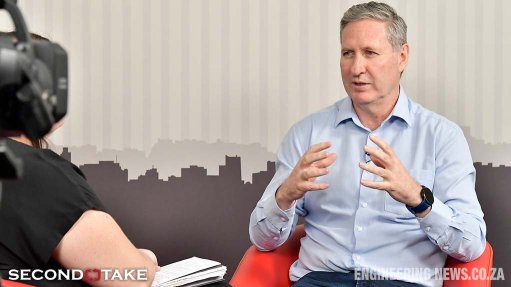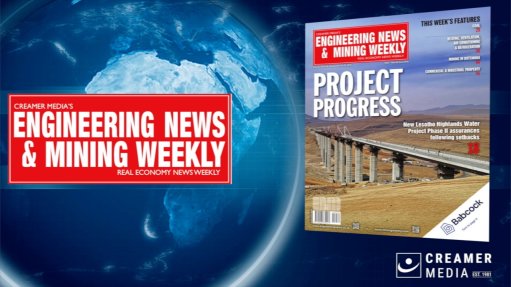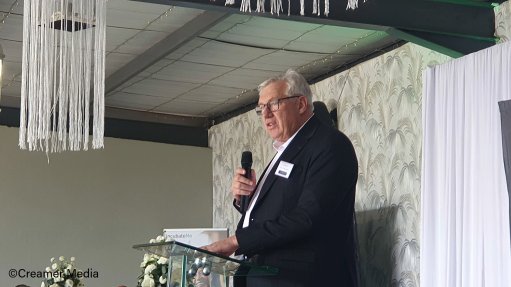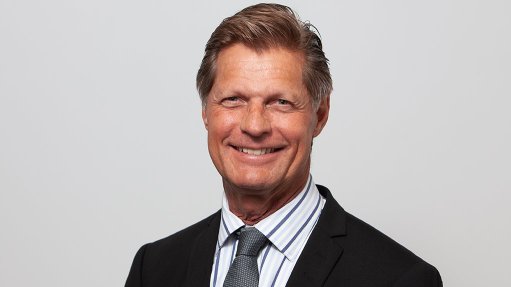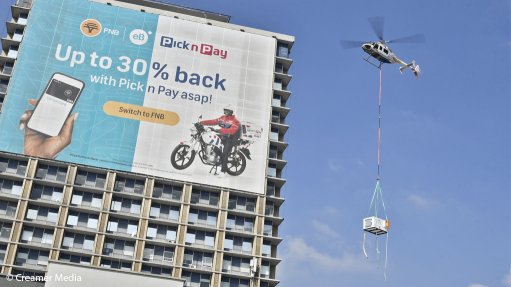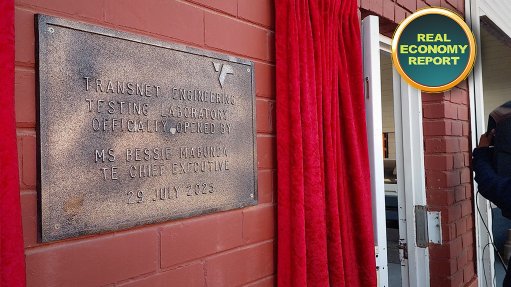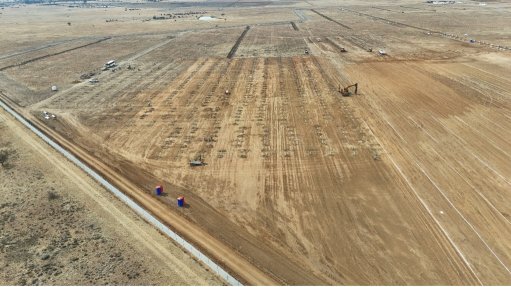Platinum's hard work of '90s thrown away – Cadiz
CAPE TOWN (miningweekly.com) – The hard work that the South African platinum industry did in the 1990s had been thrown away, Cadiz Corporate Solutions mining head Peter Major said on Monday.
Major told the Investing in African Mining Indaba that for a prolonged period the platinum mines gave unions whatever wage increase they requested and committed vast amounts of capital to expansion, before confronting a steep decline in demand.
“Everybody was drinking happy juice,” he said.
As result, the South African platinum-mining industry had wedged itself into a corner.
But despite that, South Africa had a trillion dollars worth of platinum reserves, and even in these challenging times, platinum continued to present a better investment proposition than gold, in Major’s view.
There had been a huge increase in platinum supply, which was why Anglo American Platinum (Amplats), as the dominant supplier, had to keep on expanding, and consequently entered its R6.5-billion loss predicament.
More than $10-billion became tied up in Amplats production, demand fell and the company was rendered uneconomic.
“We’re not sure who’s running the mines here any more,” said Major of South Africa, where unprofitable Amplats has had, under government pressure, to stall closing two mines, suspending four shafts, selling Union mine and retrenching 14 000 mineworkers.
South Africa’s long mining history went back to 1852, Major reflected, with the listing of the country’s first mining company in London.
Major recalled that the very first South African mining company went to London to raise money.
“This is a very established mining country, 160 years of listed shares,” Major added.
The South African platinum industry had one openpit mine, which was making money, and there was another openpit mine that thought it would make money some day.
But platinum mining was overwhelmingly underground mining, a tough business, and unlikely to change in any of the platinum jurisdictions, which meant that it would have to deal with unions to a far greater extent than was the case with openpit mines.
Mechanisation of underground mines had been unsuccessful.
“We’ve seen a couple of billion dollars of trackless mining equipment put into platinum mines. In a few places, yes, it’s successful, but in the majority of places it’s not, and all it does is add costs, it doesn’t retrench as many workers, it doesn’t train as many workers as it’s promised and it’s added to our costs,” Major said.
It was not the solution with South Africa’s narrow-reef orebodies.
Most of the South African platinum mines were already significantly beyond 1 000 m deep and going deeper.
TEN PRODUCTS
In the desperate current times, platinum miners were going to process the chrome in the suite of six base metals.
“This is because they are so desperate to get any kind of revenue off their ore they can,” he said.
While one product, gold, yielded $200/t, the ten platinum-group metals (PGMs), with inordinately complex to recovery criteria, were managing only $152/t.
Platinum miners were thus receiving 25% less than gold miners for a lot more work.
Stillwater in American received $440 for every ton of ore taken out of the ground, Russia received $600/t, openpit Voisey’s Bay in Canada yielded $730/t and Zimbabwe, with the lowest revenue a ton, had the highest margins in the platinum industry.
Why was the lowest-grade Zimbabwean producer the country with the highest profit margins, Major asked.
On the lowest possible figure of 1 000-million ounces of PGM, South Africa could make money at today’s prices by extracting the trillion dollars worth of platinum in the ground.
The PGMs, platinum, palladium and rhodium, taken out of the ground – the target of investors – guaranteed 11% a year in rands and 5% in dollars, which not many businesses guaranteed over time.
“The ‘90s were the golden era. That’s when South Africa had a newly elected democratic government and everyone was in love with everbody.
“The mines just negotiated with labour and the government never appeared on the same page as unions and mining companies. What the platinum- and gold-mining industries were doing then is assuring that cost increases were below inflation.
“All that changed in the new millennium. All the hard work of the ‘90s, I’m afraid, has been thrown away.
"Government raked in the money in taxes and royalties. Whatever the workers asked for, they got. All the pet projects of the mining companies got the go-ahead.
“Mining companies were buying assets. Why build a mine when you can buy one? Everybody was drinking happy juice in the last ten years. Nobody cared about costs, and you can see the costs going sky high.
“Even though the platinum price went up 12% in rands, I can’t find any cost increase in the last ten years below 17%.
“The cost per ounce of platinum in this country, in dollars and rand, is between 15% and 20% a year for the last ten years.
“So, the platinum industry has wedged itself tight into a corner,” Major told the Mining Indaba.
PGM RETURNS
Platinum and diamonds sound very attractive, but they generally give the lowest investment returns in Major’s experience.
Currently, many diamond companies and platinum companies were losing money when there were not many other mining companies losing money.
Out of 100 elements, platinum, palladium and rhodium, used in autocatalysis and jewellery, were unique.
Iridium, osmium and platinum were hard, heavy and indestructible and were useable over and over in catalytic converters.
Of the four places where PGMs were found, only two, South Africa, which dominates, and Russia, were of any note.
Rhodium, which was important in autocatalytic converters, and ruthenium, which was important in electronics, mean less and are worth less.
Comments
Press Office
Announcements
What's On
Subscribe to improve your user experience...
Option 1 (equivalent of R125 a month):
Receive a weekly copy of Creamer Media's Engineering News & Mining Weekly magazine
(print copy for those in South Africa and e-magazine for those outside of South Africa)
Receive daily email newsletters
Access to full search results
Access archive of magazine back copies
Access to Projects in Progress
Access to ONE Research Report of your choice in PDF format
Option 2 (equivalent of R375 a month):
All benefits from Option 1
PLUS
Access to Creamer Media's Research Channel Africa for ALL Research Reports, in PDF format, on various industrial and mining sectors
including Electricity; Water; Energy Transition; Hydrogen; Roads, Rail and Ports; Coal; Gold; Platinum; Battery Metals; etc.
Already a subscriber?
Forgotten your password?
Receive weekly copy of Creamer Media's Engineering News & Mining Weekly magazine (print copy for those in South Africa and e-magazine for those outside of South Africa)
➕
Recieve daily email newsletters
➕
Access to full search results
➕
Access archive of magazine back copies
➕
Access to Projects in Progress
➕
Access to ONE Research Report of your choice in PDF format
RESEARCH CHANNEL AFRICA
R4500 (equivalent of R375 a month)
SUBSCRIBEAll benefits from Option 1
➕
Access to Creamer Media's Research Channel Africa for ALL Research Reports on various industrial and mining sectors, in PDF format, including on:
Electricity
➕
Water
➕
Energy Transition
➕
Hydrogen
➕
Roads, Rail and Ports
➕
Coal
➕
Gold
➕
Platinum
➕
Battery Metals
➕
etc.
Receive all benefits from Option 1 or Option 2 delivered to numerous people at your company
➕
Multiple User names and Passwords for simultaneous log-ins
➕
Intranet integration access to all in your organisation







